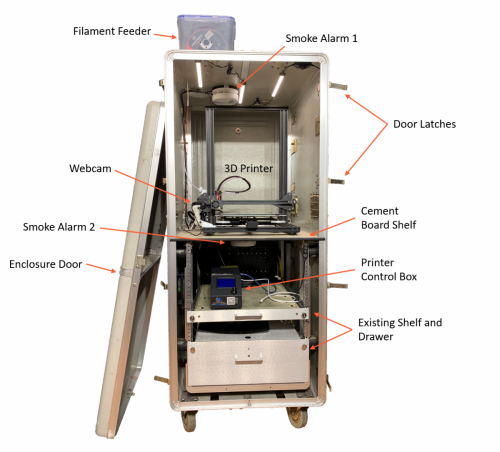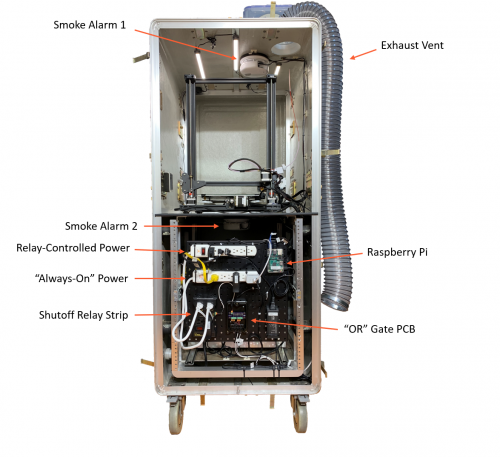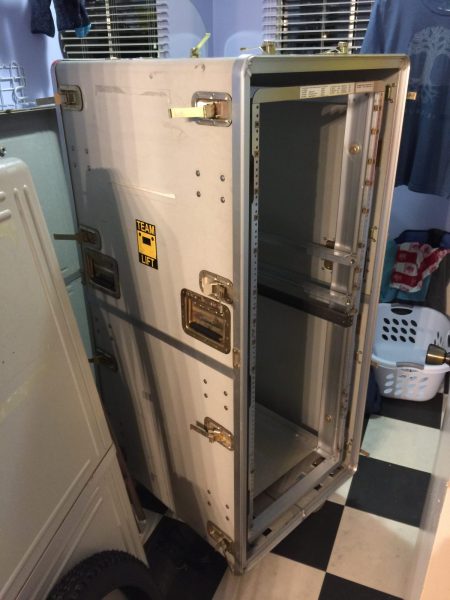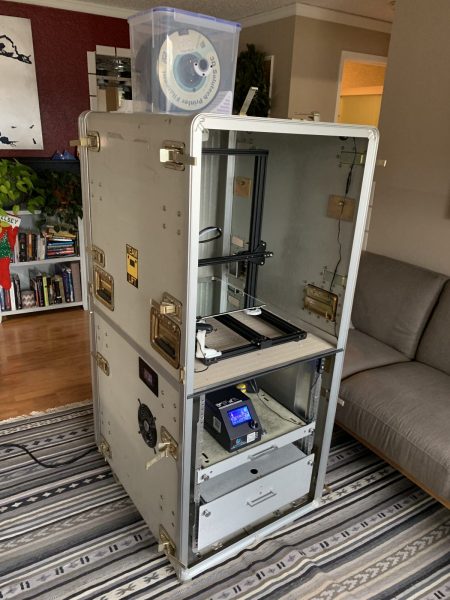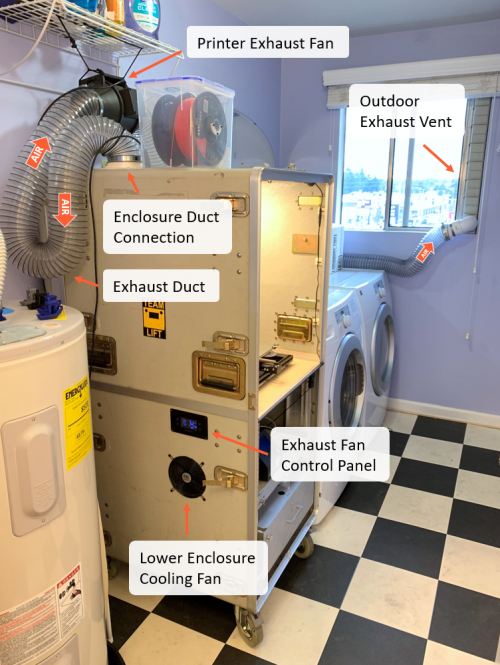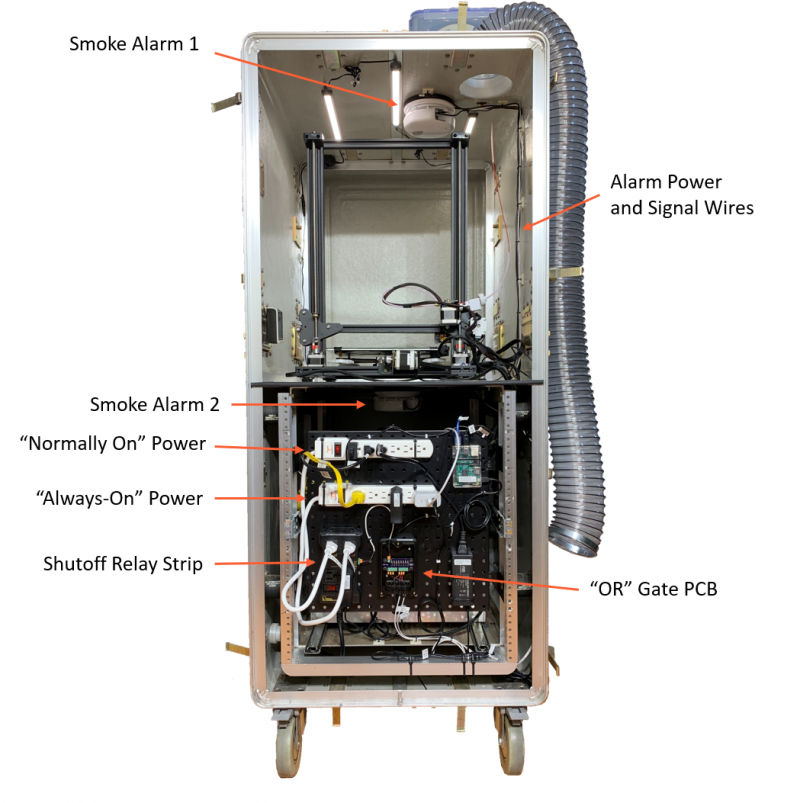3D Printer Enclosure
In the process of printing, my 3D printer creates bad smells and makes noise. Worse yet, cheaper 3D printers (like mine) are known to catch on fire. Because I share my living space with my printer, I needed to find a solution for my printer’s less desirable traits.
Using a fiberglass and aluminum box (a re-purposed aircraft test equipment container), I created a “smart” enclosure for my 3D printer. I built the enclosure with fire prevention and containment in mind. It features a smoke alarm triggered printer shut-off, remote monitoring, and is built from non-flammable materials. The enclosure is vented to allow printing fumes to be exhausted outdoors.

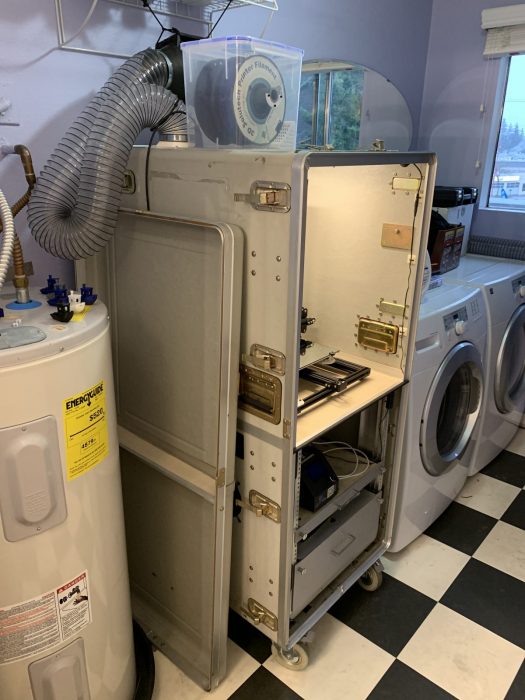
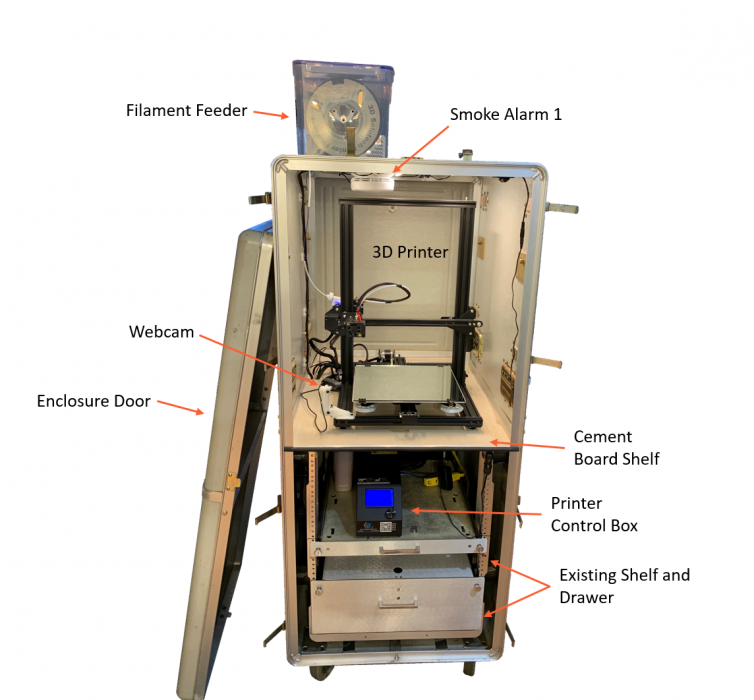
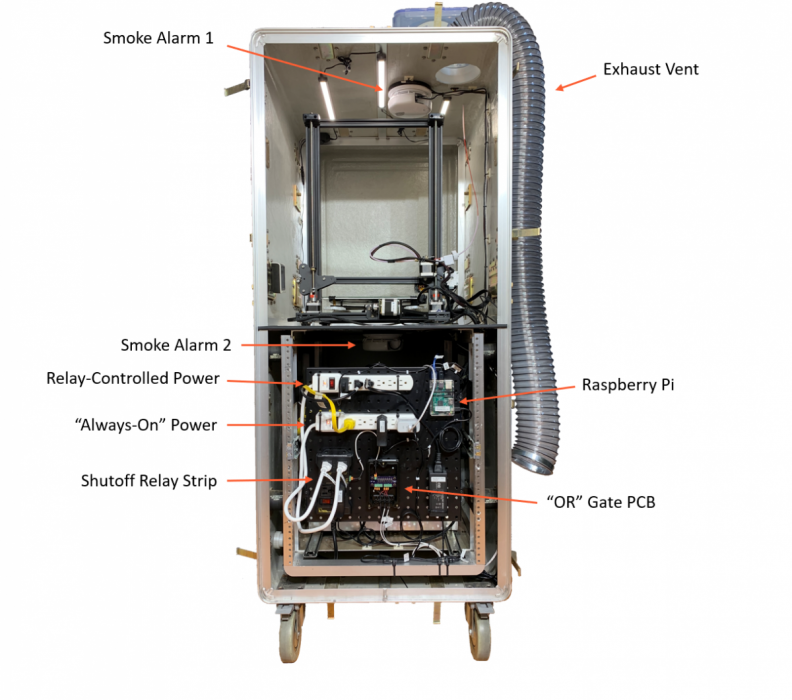
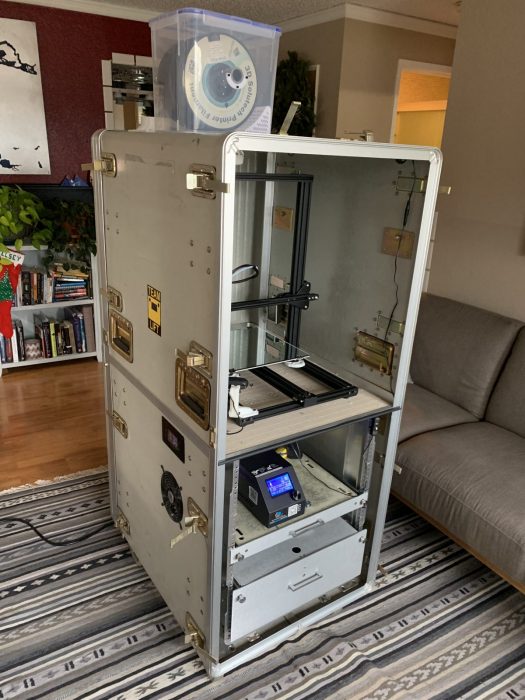
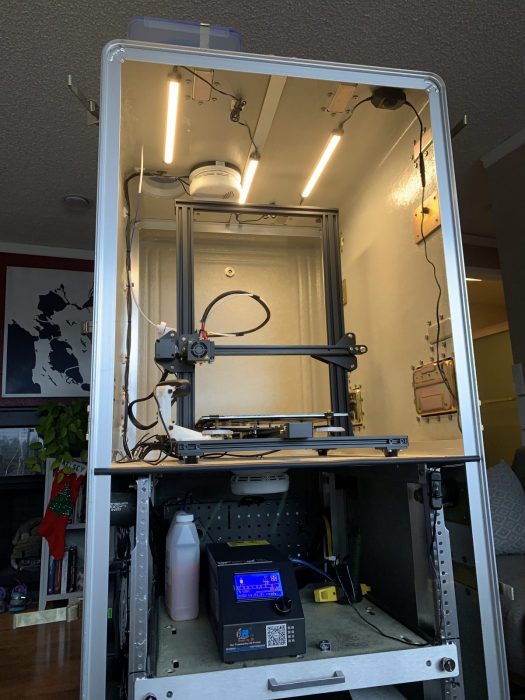
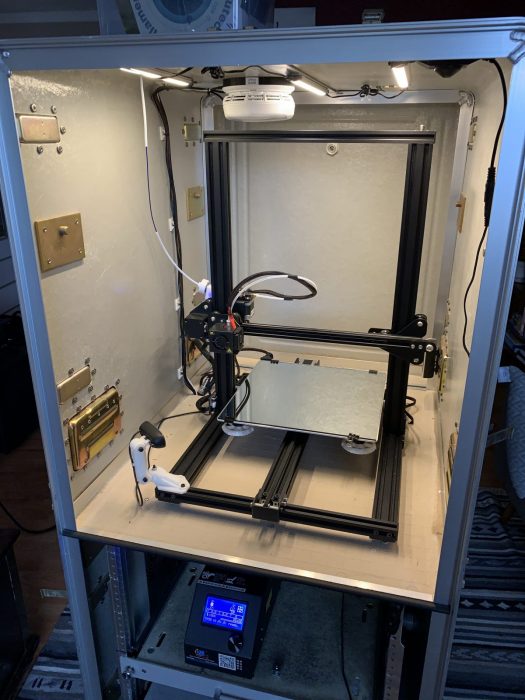
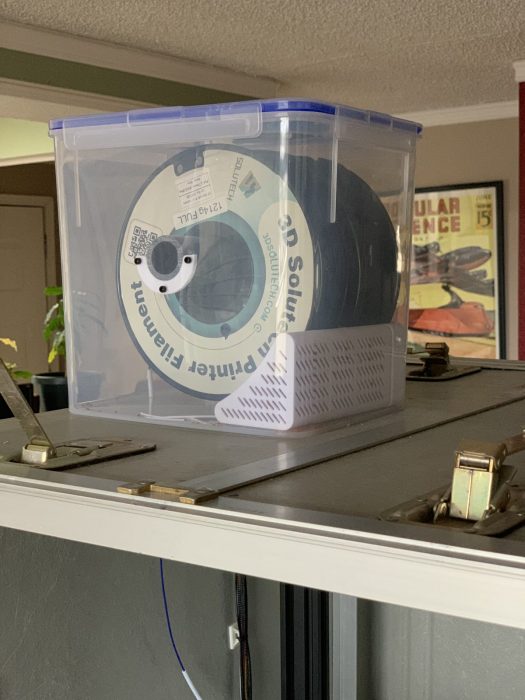
Problem:
Byproducts of Fused Filament Fabrication (FFF) 3D printing:
- Unhealthy plastic fumes
- Noise
- Fire Risk
Solution:
A “smart” printer enclosure:
- Enclosure built from non-flammable materials to contain fire.
- Smoke alarm shut-off remove power if smoke is detected.
- Ventilation system to vent outdoors.
- Fully enclosed to quiet printer noises.
I had a tough time looking for an enclosure to modify to suit my needs. My Creality CR-10S printer requires an approximately 28″ x 24″ x 20″ space to do its printing, which is larger than most standard cabinets. Because fire safety was a priority, I ruled out any DIY enclosures that used plywood or other flammable materials. The “holy grail” would have been an all-metal enclosure, but whatever solution I found would need to be carried up the stairs to my apartment, and that made bulky steel toolboxes less attractive. Eventually, I discovered 19-inch server racks, which seemed to have the right depth without being excessively wide. Armed with new search terms, I turned to Craigslist.
I purchased the equipment case for $60 from a gentleman who bought a pallet of various travel cases at a Boeing surplus auction. The case was dusty and empty when I received it, but it did have a label indicating that it had been used for test equipment.
According to the CDC, there’s still research needed to determine if 3D printing fumes are actually hazardous. However, 3D printers have been proven to release ultrafine particles, and ABS printing adds VOCs to the mix. I’d rather err on the side of safety, so I decided a requirement for my enclosure would be to vent printing fumes outdoors. Regardless of health effects, it’s nice to get the “hot plastic” smells out of my apartment.
Chinese “clone” printers have made 3D printers accessible as hobbyist equipment by cutting costs. The downside of low-cost printers is that the manufacturers cut corners to lower the price point, especially where quality control and safety are concerned. Certain printers have poorer reputations than others (Anet A8 printers seem to be especially fire prone) but even my Creality CR-10S was shipped with a glaring firmware flaw – no thermal runaway protection. The fact of the matter is that all fused filament fabrication printers will have one or two powerful heating elements, and it’s a risk to leave such a device unattended. Thankfully, there are ways to mitigate some of the risk of unattended printing.

